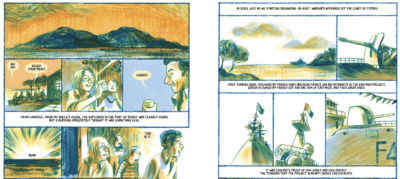“The story of the horse – which became Marco Cavallo – was originally told by a patient. The horse had a real connection to the hospital and its history:
His name was not plucked from thin air. Marco had been the name of the horse who used to cart away the hospital’s dirty linen – the only one, as some of the older patients quipped, who managed to get out of the hospital.
The theatre laboratoty that would ‘make’ Marco Cavallo worked through January and February 1973. A daily newsletter was produced and big puppets were made, with massive heads. … They wanted to privilige the idea of struggle, not celebrate what had already been achieved. According tot the story often told about this event (and portrayed in the TV film about Basaglia), the horse was too big to fit through the doors of the ward, so it was decided that this barrier needed to be knocked down in order to ‘release’ the work of art. … At the time, characteristically perhaps, a huge debate took place over the menaing of the horse’s exit and above all its political significance. Peppe dell’Acqua, a key participant and later chronicler of the Basaglian experience in Trieste, tells of a discussion that raged on until four in the morning. There were even threats of a physical confrontation. In the end, an agreement was reached: ’the horse will leave’; and a leaflet was drawn up to accompany the event. This document was a classic Basaglia combination of philosophical thought and media strategy (‘Marco Cavallo is a symbol of the ongoing liberation process for all those who suffer in the life of the asylym’), alongside specific political and economic demands (about hours and working conditions).”
Aldus John Foot in The man who closed the asylums, afbeelding van equitable.it.




